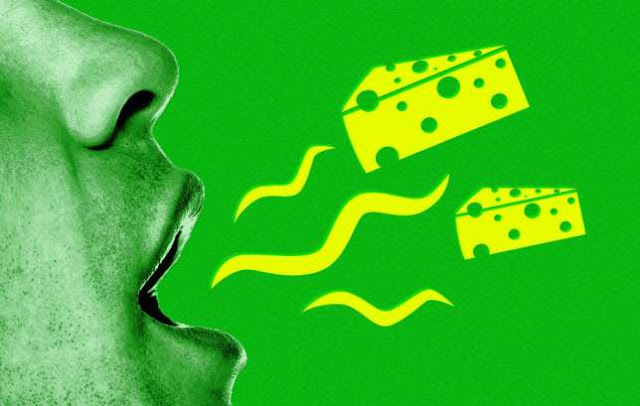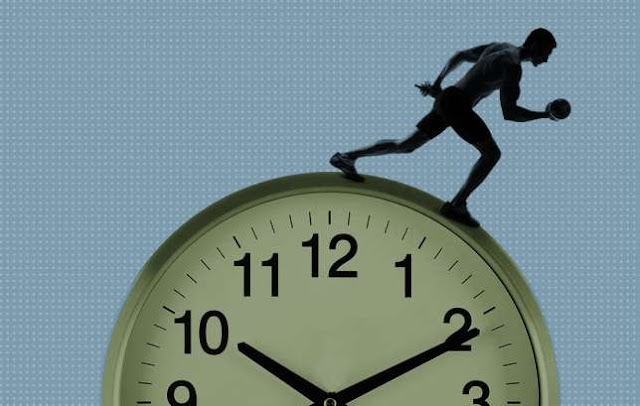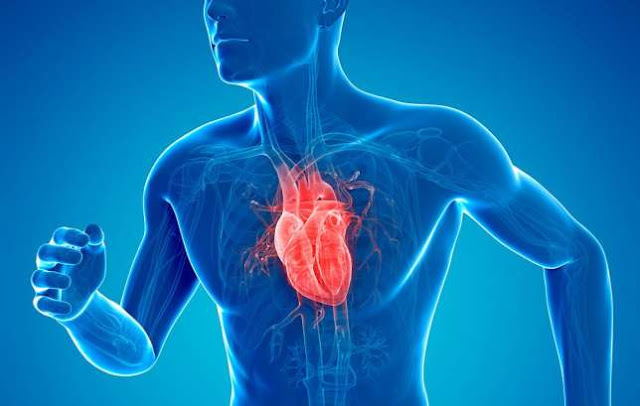
There are certain foods that—as soon as they hit your lips—can have a damaging effect on your waistline. Luckily, spotting them and taking them off your menu for good takes less than 60 seconds. Easy peasy.
Here are the 12 foods you need to avoid, how minimizing their consumption minimizes your waistline, and how to make simple substitutions so you don't feel deprived.
And go!
1. DITCH HIGH-FRUCTOSE CORN SYRUP
Corn syrup is the sugar extracted from corn. It is not and never has been healthy, but as corn is now almost entirely genetically modified, it is even worse for us. The fructose in high-fructose corn syrup (HFCS) converts to fat stores quickly in your body, which is why it is frequently used in animal experiments to make animals obese. This food additive is found in most packaged, prepared, and fast foods and interferes with your body's appetite and metabolism hormones, causing your body to store fat. It can be found just about anywhere; food manufacturers have been profiting by sneaking this cheap food additive into our food supply in greater quantities over the last few decades, and it shows in our waistlines.
But there's good news. By eliminating the so-called natural sweetener for good, you can drop the weight and reduce high blood pressure linked to HFCS.
What to do: Read labels on any products you purchase and be sure that the ingredient list doesn't include high fructose corn syrup, corn syrup, or fructose.
Health bonus: By eliminating HFCS, you'll reduce the likelihood of experiencing any potential ill effects of eating genetically modified (GM) foods. Eliminating high fructose corn syrup will also help you to regulate blood pressure and triglycerides, two important factors for a healthy heart and arteries. By removing HFCS from your diet, you'll dramatically reduce your chances of suffering a heart attack or stroke.
2. SAYONARA, SPLENDA
This artificial sweetener contributes to weight gain yet is hidden in most "sugar-free" products—and may even be hidden in your water supply.
A study conducted at Duke University and published in the Journal of Toxicology and Environmental Health found that sucralose (also known as Splenda) is absorbed by fat cells (contrary to the manufacturer's claims about the artificial sweetener), causes increases in body weight, and reduces the amount of beneficial bacteria in your intestines by 50 percent (you'll discover later that this factor also contributes to weight gain, among other health issues).
All of these effects of sucralose consumption can cause an increase in weight and fat and can sabotage your weight-loss efforts. Worse than that, sucralose is one of the main sweeteners used in "sugar-free" and "diet" foods and beverages. Many well-meaning dieters choose these options over foods with sugar to keep their weight down, but their efforts are negated by this harmful artificial sweetener.
What to do: It is important to start reading labels on everything you purchase. (Of course, choosing fruits and vegetables in their unadulterated state means fewer labels to read, since produce usually doesn't require them.) Avoid any food that contains sucralose. Stop choosing diet beverages and adding packaged flavorings to your water. Avoid flavored water, "diet" or "sugar-free" baked goods, coffee syrups, and other items.
Health bonus: By eliminating sucralose from your diet, you'll likely experience other health benefits, including improved hormonal balance and fewer headaches or allergies.
3. AVOID ASPARTAME
Shakespeare said, "A rose by any other name would smell as sweet." While that may be true of roses, it isn't true of artificial sweeteners. Aspartame recently had a name change in an effort to shake all the bad press linking it to a lengthy list of serious health conditions and is now known as Neotame and AminoSweet.
These new names may sound sweet, but the chemical components of aspartic acid, phenylalanine, and methanol are just as harmful as ever. Humans have no enzymes in their bodies to break down methanol, so it gets converted into formaldehyde, a known carcinogen that most people have heard of but don't expect to ingest from their soda. This ultimately becomes formic acid, or formate, which significantly increases acidity levels in the body. You don't need to remember the biochemical chain of events that aspartame goes through once you've to metabolize this toxin are harmful enough to cause cancer.
What to do: Stop using any products labeled "sugar-free" or "diet." In most cases these terms are used wherever aspartame is found. That includes diet soda, sugar-free coffee syrups, sugar-free cookies, diabetic treats, sugar-free pastries, and more. And when the product doesn’t contain aspartame it usually contains sucralose, so either way, you benefit from removing these harmful artificial sweeteners from your diet.
Health bonus: By eliminating aspartame from your diet, you'll likely reduce your risk of cancer and neurological disorders too. At the very least, you'll probably suffer fewer headaches.
4. TAKE OUT THE TRANS FAT
By now you've probably heard of trans fats. Trans fats are fats that have been chemically altered during the manufacturing and processing of oils and are found in most processed, packaged, and prepared foods. These "plastic fats," as I call them, are almost impossible for your body to digest and for your liver to process, making them highly likely to be stored in your body.
Fast-food meals aren't the only places trans fats hide. They are in many bakery goods, such as cookies, cakes, pies, and even so-called healthy breads. They are even found in some health food store goods, so be sure to start reading labels. Even when a product claims "zero trans fats" the government allows a small amount of these toxic fats to be hidden in your food.
What to do: Read the nutrition facts on the packages of any food products you purchase. Choose only products that state "0 g trans fat." While you still may be exposed to small amounts, it's better than the higher quantities found in many products. Also, stop buying bakery goods that do not include this information. While they may not contain trans fats, more than likely they do. Also, read the ingredient list and look for "partially hydrogenated" or "hydrogenated" on the label. If a product contains either of these terms or "vegetable shortening," skip it. It contains fattening and health-harming trans fats.
Health bonus: By eliminating trans fats, you're also reducing the likelihood of experiencing diabetes, since these harmful fats are linked to this serious condition.
5. SAY GOODBYE TO SODA—EVEN DIET SODA
Soda is one of the worst culprits for weight gain. It also interferes with weight-loss efforts. If you're drinking soda, it's time to switch to a healthier option. First, let's explore why soda is such a problem. There is no health value in soda. It has nothing positive to contribute to your body: It is full of synthetic colors, preservatives, sugar, artificial sweeteners, and other unhealthy ingredients.
You may be thinking, "But this doesn't apply to me since I drink diet soda." Diet soda is worse than regular soda. Not only is it extremely acidic, but it also contains aspartame, which is detrimental to your health.
What to do: Stop drinking soft drinks. It takes time for your tastebuds to adjust, but they will adapt. If you absolutely must have something fizzy, mix a small amount of pure juice like pomegranate with some carbonated water. But you should try to eliminate all carbonated beverages from your diet over time.
Health bonus: By forgoing soda, you're taking a huge step toward balancing your pH. Soda's extremely acid-forming nature contributes to headaches, pain disorders, and other symptoms of an acid-forming diet. If you're prone to headaches or pain, you'll notice pain levels will drop (after you're finished with any caffeine-withdrawal headaches, if you've been addicted to caffeine). If you don't have any pain disorders, you'll likely find that you're less prone to them later in life if you stop drinking soda now.
6. LEARN TO LIMIT SUGAR
Naturally-occurring sugar is still one of the worst foods you can consume, particularly if you're trying to lose weight. Linked to high blood pressure, high cholesterol, heart disease, weight gain, diabetes, and premature aging—to name only a few—sugar in the amounts we consume is one of the worst substances we put into our bodies.
Here's the good news: Sugar consumption is easy to reduce because we are starting from such a high quantity.
What to do: If you haven't already thrown out anything in your cupboards or fridge that contains sweetener, now is the time to do so. Look for any ingredient that contains -ose, such as glucose, high-fructose corn syrup, dextrose, maltose, etc. Instead, use small amounts (a maximum of 1 teaspoon three times a day) of pure, unpasteurized honey, pure maple syrup, barley malt, agave nectar, or the herb stevia.
Health bonus: Even a few teaspoons of sugar at a time will suppress your immune system for four to six hours. Most cookies, pastries, pies, cakes, and other sweets contain far more sugar than that. By greatly reducing the amount of sugar you consume, you'll not only lose weight, but you'll also restore your immune system, becoming far less likely to succumb to whatever virus is "going around."
7. ELIMINATE SUSPECTED FOOD SENSITIVITES
When most people hear the term "food sensitivities," they imagine a stuffed or runny nose, itchy eyes, or other common symptoms from environmental allergens. While food sensitivities can cause these symptoms, they can also masquerade as other health issues, including weight gain and bloating.
Tissue swelling or bloating is a common symptom linked to eating foods to which you are sensitive. Some people lose weight just from cutting out those trigger foods. Some foods that commonly cause sensitivities are wheat, dairy products, corn and corn derivatives, soy, refined sugar, eggs, coffee or caffeine, beef, fish, or shellfish. Of course, there are others, but these are the most common offenders.
What to do: While many people recommend rotation diets of specific foods and food families, that is simply not plausible for most people. If you suspect you are sensitive to a particular food, eliminate it from your diet for a month and see how you feel. It may take a while to notice an improvement because the food can still be in your system or causing inflammation in your body long after you last ingested it. If you suspect sensitivities, but are not sure what foods are the culprits, try eliminating the most common ones above.
Health bonus: If you eliminate foods to which you are sensitive (and here's how to do it), you'll experience much higher energy levels.
8. DON'T BOTHER WITH MOST DIET PILLS
Most commercial diet products—particularly diet pills—do not work. Over-the-counter diet pills usually contain the ingredient phenylethylamine, which should be avoided. These pills trick your brain into thinking that you're not hungry, which may be fine while you're taking them. But as soon as you stop taking the pills and return to the generally unhealthy eating patterns most people have, you'll find the weight quickly returns. Or worse, you may gain more weight than you started with.
What to do: This is fairly straightforward. Just avoid or stop taking diet pills. Of course, if they are prescribed by your physician, you should consult her first.
Health bonus: Not only will you avoid the rebound weight gain linked with diet pills, you'll also avoid the heartburn, nausea, constipation, headaches, and insomnia to which they are linked.
9. DON'T DRINK DIET SHAKES
Diet drinks are usually high-protein shakes made with isolated amino, or many different amino acids to build new tissue, heal existing tissue, and perform many other functions. But a deficiency in just one can cause a host of health issues. Most diet drinks encourage amino acid deficiencies by using amino acids in a way not intended by nature.
Diet shakes are not substitutes for a healthy diet. Having said that, replacing a meal with a highly nutritious shake can help with weight-loss efforts, provided you include the right ingredients and avoid the harmful ones.
What to do: Start by purchasing a whole foods protein powder. Avoid any protein powders that contain isolated protein, isolated vegetable protein, or isolated soy protein, since these unnatural ingredients have been linked to many health issues. Additionally, avoid any protein powders that contain autolyzed or hydrolyzed ingredients since they usually reflect isolated proteins that are damaging to the body.
Health bonus: Not only will you notice that it's easier to lose weight when you eliminate diet shakes containing glutamate, you'll find that by avoiding the protein powders containing isolated amino acids, you'll have fewer headaches and other nagging health concerns.
10. UNCOVER HIDDEN MSG
Protein powders and shakes are not the only hiding places for isolated amino acids. Anything that contains monosodium glutamate (MSG) is also an issue. And unfortunately, MSG has not only been shown in countless studies to be linked to weight gain and hunger, but it's also a proven neurotoxin—a toxin that does serious damage to the brain and nervous system.
Avoid these hidden sources of MSG and little-known names for MSG to make sure you're not including these health dangers in your diet.
What to do: It's inexcusable, considering the volumes of research proving the damaging effects of MSG, that government agencies still allow the food-processing and fast-food industries to continue using this toxin. Until they stop, you need to take charge of the food ingredients that you're consuming. Next time you're buying packaged foods, be sure to take the above list with you to avoid harmful chemicals that are most likely sabotaging your weight-loss efforts and negatively impacting your health.
Health bonus: Eliminating MSG from your diet can have innumerable effects in addition to weight loss. Because MSG is linked to mood disorders, headaches and migraines, anxiety disorders, attention deficit hyperactivity disorder (ADHD), depression, autism, and many others, you may notice that your moods become more balanced, your anxiety and depression diminish, you have fewer headaches and migraines, and your mental alertness improves.
11. REDUCE PESTICIDES AND HEAVY METALS
Common toxins found in the environment, food, personal-care products, and surprising other sources can interfere with your body's natural fat-burning processes by impairing important enzymes involved in metabolism. These harmful toxins include heavy metals and pesticides.
What to do: Don't spray your lawn with pesticides. Avoid using pesticides or insecticides in your home. Choose organic produce as much as possible, particularly for the "dirty dozen." The dirty dozen are foods that research shows consistently contain high levels of pesticides. They are peaches, apples, bell peppers, celery, nectarines, strawberries, cherries, lettuce, grapes, pears, spinach, and potatoes. If you aren't able to purchase only organic products, be sure to try to find organic variations of the dirty dozen especially.
Health bonus: By eliminating pesticides from your home and lawn you may decrease your risk of brain diseases like Parkinson's. Parkinson's disease has been linked to pesticide exposures by large amounts of research.
12. WIPE OUT WHITE FLOUR
According to research by Katherine L. Tucker, Ph.D., of the Jean Mayer USDA Human Nutrition Research Center on Aging, Tufts University, people who eat three or four servings daily of foods made with white flour (including white bread, wheat bread, bagels, muffins, pancakes, cookies, pies, and cakes) have significantly larger waistlines than people whose carbs come primarily from whole grains.
That's not surprising when you understand that refined flour and the baked goods and cereals made from them are treated almost the same as white sugar in your body. They cause rapid blood sugar spikes, which cause your pancreas (the organ just below your ribs on the left side of your abdomen that regulates digestion and blood sugar) to secrete insulin.
What to do: Avoid eating foods made with refined sugar or white and wheat flour. Over time your desire for these types of foods will diminish. If you're still craving sweets, eat a meal or a snack more often—about every two to three hours. Be sure your meal contains some protein foods, like fish, chicken, nuts, seeds, tofu, or beans. Eating more healthy fats such as coconut oil, flaxseeds and flaxseed oil, avocado, and nuts can also help you feel full longer. You can also supplement with chromium.
Health bonus: Eat moderate amounts of healthy carbs. They include most vegetables (sorry, potatoes don't work on a slimming program), whole grains, legumes, and fruit (eat fruit occasionally, and avoid pineapples and bananas until you've reached your target weight—and then eat them only in minimal amounts, because of the high amount of sugars they contain).
























